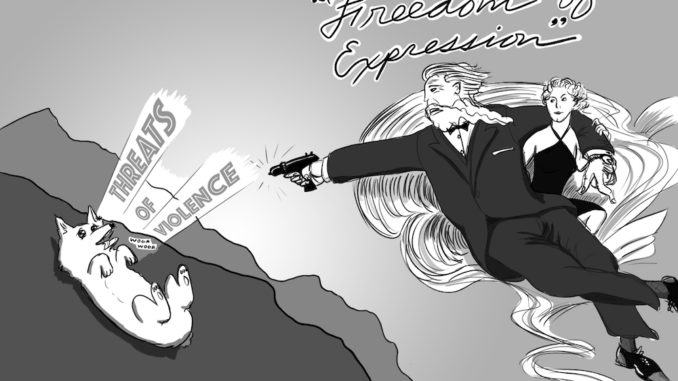
By Jackson Sundheim
When I was a young boy of perhaps five or six, my grandmother took me to the San Francisco Museum of Modern Art. One of the works on display was Marcel Duchamp’s “Fountain,” which consists of a urinal tipped on its side with the inscription “R. Mutt 1917” painted on the rim. In my efforts to comprehend why it counted as art, I came a little too close and attracted the attention of a security guard who told me to back away from the “art.” In the decade and a half since this bewildering experience, I have come to terms with the fact that museum curators will go out of their way to acquire a slightly altered urinal for their collection, and artists have the right to make their art, even if I don’t like it.
However, not quite everything created in the name of “art” can go on display unprotested, as the curators of the Solomon R. Guggenheim Museum in New York recently found out.
The museum’s current exhibit, “Art and China After 1989: Theater of the World,” is now three pieces short of its original scope. The exhibit is a series of art pieces created between the end of the Cold War and the 2008 Beijing Olympics meant to address China’s rising power and increasing globalization.
The exhibit is now truncated because of an online petition on Change.org which urged the curators to remove three pieces, which include a video of pit bulls forced to run on treadmills, a cage full of live insects and reptiles eating each other, and a video of caged, painted pigs having sex. Almost 800,000 people have signed the petition, including myself.
I myself believe in the causes of animal rights and was hopeful that the Guggenheim curators would respectfully acknowledge the beliefs of so many people opposed to the exhibit, even if they kept these pieces. But when the museum announced the withdrawal of the three pieces on Sept. 25, I was dismayed that they made no mention of this peaceful resistance to animal cruelty. According to the press release on the closure of the problematic art, “the Guggenheim regrets that explicit and repeated threats of violence have made our decision necessary.”
Regardless of whether these threats were actually made as the museum claims, the decision to ignore the hundreds of thousands of peaceful activists who used polite dialogue shows a distinct and worrisome disdain for the issue which caused the petition to gain so much traction. Animal rights are difficult to get any sort of consensus on, especially in a society in which cows and pigs are used to feed the populace but dogs and cats are seen by many as intelligent companions.
If the Guggenheim had recognized the legitimate concerns of those who signed the Change.org petition, then perhaps the controversy would lose steam and common ground could be found. Instead they chose to cast animal rights activists as violent, angry criminals and ignore the actual issue at hand altogether.
However, many argue that pulling these art pieces sets a precedent for infringing on an artists’ right to free speech. PEN America, a free speech organization based in New York City, stated in a recent statement that “even artistic expression that deeply offends is not a justification for threatened or actual violence … those who celebrate the removal of these works should consider what gets removed next, and at whose behest.”
Though I believe in artistic freedom, much like the slippery slope argument made by President Trump regarding the removal of Confederate statues, it only holds water if you believe that the pieces of art in question are not harmful. I believe that these art pieces were inherently harmful, since they clearly hurt animals, and by exhibiting this behavior, normalized this. If the exhibit had shown live people being tortured against their will, would the Guggenheim have agreed to put it on display? But since it’s animals, it isn’t a matter of concern for the Guggenheim or PEN America. For these groups, equating animals with inanimate objects is at worst “offensive” because, in their eyes, animals are simply inferior and exist solely for our enjoyment – no matter the cost.
Subscribe to the Mossy Log Newsletter
Stay up to date with the goings-on at Lewis & Clark! Get the top stories or your favorite section delivered to your inbox whenever we release a new issue.

Leave a Reply